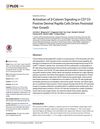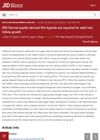TLDR Immune cells might contribute to hair loss caused by a specific mutation.
The document discussed the potential role of immune cells in the hair loss process caused by a TRPV3 gain-of-function mutation. This mutation was linked to abnormal hair growth and loss, suggesting that immune cells might contribute to the pathology. The findings highlighted the importance of understanding the immune system's involvement in hair disorders, which could lead to new therapeutic strategies for treating hair loss conditions.
 26 citations
,
July 2016 in “PLOS ONE”
26 citations
,
July 2016 in “PLOS ONE” Activating β-catenin in certain skin cells speeds up hair growth in mice.
 April 2016 in “Journal of Investigative Dermatology”
April 2016 in “Journal of Investigative Dermatology” Wnt ligands, produced by dermal papilla cells, are essential for adult hair growth and regeneration.
 10 citations
,
February 2016 in “Journal of Dermatological Science”
10 citations
,
February 2016 in “Journal of Dermatological Science” Skin sheath cells help in hair growth and renewal after birth.
 184 citations
,
November 2014 in “Developmental Cell”
184 citations
,
November 2014 in “Developmental Cell” Hair follicle dermal stem cells are key for regenerating parts of the hair follicle and determining hair type.
95 citations
,
July 2006 in “British Journal of Dermatology” Vitamin D receptors in hair follicles change with the hair cycle, affecting hair growth.
154 citations
,
October 1996 in “Proceedings of the National Academy of Sciences of the United States of America” Estrogen affects hair growth and skin cell multiplication.




